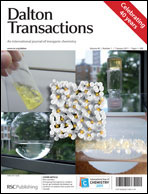We report that the oxygen sensitivity of some Fe(II) complexes with tripodal ligands can be used, with benefit, in the oxidation of cyclohexane under mild conditions. Depending on the solvent, two very different reaction pathways are involved, which share the coordination of O2 to the metal as the common initial step. We have synthesized a series of α-chlorinated tripods in the tris(2-pyridylmethyl)amine series ClnTPA (n = 1–3) and fully characterized the corresponding FeX2 complexes (X = Cl, CF3SO3). The single-crystal X-ray structure analyses of the FeCl2 complexes are reported. In CH3CN, the FeCl2 complexes react smoothly with O2, whereas the Fe(CF3SO3)2 complexes are non-sensitive. In CH3CN, the reaction of the oxygen-sensitive ClnTPAFeCl2 (n = 0–3) with O2, acetic acid and zinc amalgam, in the presence of cyclohexane, affords a mixture of cyclohexanol/one in an ≈ ol/one ratio of 3.1 and a selectivity of the C3°/C2° in the adamantane conversion that is consistent with a metal-oxo based oxidation. Limited efficiency (≈ 2 TON) was observed for the parent TPAFeCl2 complex and Cl1TPAFeCl2, whereas both other complexes turned out to be poorly active. The TPAFeCl2 complex was used to address mechanistic questions: when the reaction was carried out in pyridine, the ol/one ratio shifted to 0.15 while efficiency was improved by 7-fold. In pyridine and in the presence of a spin trap (DMPO), the radical-based character of the reaction was definitely established, by contrast with acetonitrile, where no oxygenated radicals were detected. Thus, the reactivity differences arise from involvement of two distinct active species. The dichotomous radical/biomimetic pathway is discussed to interpret these results.


 Please wait while we load your content...
Please wait while we load your content...